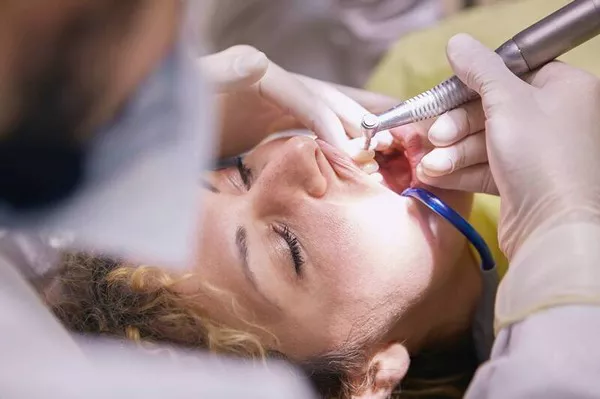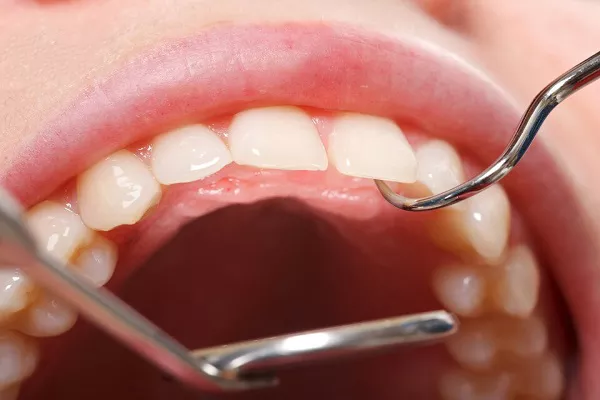Regular dental checkups and cleanings are essential for maintaining good oral health. During routine dental visits, your dentist or dental hygienist typically performs a standard cleaning to remove plaque and tartar from your teeth. However, in some cases, a deep cleaning, also known as scaling and root planing, may be necessary to address more advanced issues. In this comprehensive guide, we will explore what is involved in a deep cleaning at the dentist, why it may be needed, and what to expect during and after the procedure.
Why Is a Deep Cleaning Necessary?
A deep cleaning becomes necessary when there are signs of gum disease (periodontal disease), which is an infection of the tissues that support your teeth. Gum disease can progress in stages, with the early stage known as gingivitis, characterized by red, swollen gums that bleed easily when brushed or flossed. If left untreated, gingivitis can progress to periodontitis, a more severe form of gum disease that can lead to tooth and bone loss.
A deep cleaning is typically recommended when:
Pocket Formation: Gum disease causes the formation of pockets between the gums and teeth. These pockets can trap food particles and bacteria, making it difficult to clean effectively with regular brushing and flossing.
Plaque and Tartar Buildup: The presence of excessive plaque and tartar on the teeth and below the gumline is a sign that a deep cleaning is needed. Plaque is a soft, sticky film of bacteria that can harden into tartar over time.
Gum Recession: When the gums recede or pull away from the teeth, it can expose the tooth roots, making them susceptible to decay and sensitivity.
Bleeding and Swollen Gums: Persistent bleeding, redness, and swelling of the gums are indications of gum disease and may require a deep cleaning to address.
Tooth Mobility: Loose teeth or a change in the way your teeth fit together may be a sign of advanced gum disease, necessitating prompt treatment.
What Is Involved in a Deep Cleaning?
A deep cleaning consists of two main procedures: scaling and root planing. These steps are designed to remove the buildup of plaque, tartar, and bacteria from both the tooth surfaces and below the gumline.
Scaling:
Scaling involves the careful removal of plaque and tartar from the tooth surfaces, including the area below the gumline.
Dental instruments, such as scalers and ultrasonic devices, may be used to scale the teeth.
The process can take longer than a regular cleaning, especially if there is significant buildup.
Root Planing:
Root planing focuses on smoothing the tooth roots to remove any rough areas where bacteria can collect.
This step helps prevent future plaque and tartar buildup and promotes the reattachment of the gums to the teeth.
Root planing is often performed after scaling to ensure thorough cleaning of the tooth surfaces.
The deep cleaning procedure is typically performed under local anesthesia to ensure your comfort. Depending on the extent of gum disease and the number of quadrants (sections of your mouth) requiring treatment,
your dentist may divide the deep cleaning into multiple appointments.
What to Expect During and After a Deep Cleaning
During a deep cleaning:
Your dentist or dental hygienist will start by reviewing your medical history and taking any necessary X-rays to assess the extent of the gum disease.
The treatment area will be numbed with local anesthesia to minimize discomfort during the procedure.
The scaling and root planing process will be carried out systematically in each quadrant of your mouth, ensuring thorough cleaning.
After the procedure, your dentist may apply an antimicrobial gel or antibiotic medication to the treated areas to aid in the healing process and reduce the risk of infection.
After a deep cleaning:
It is common to experience some mild discomfort, sensitivity, or swelling for a few days after the procedure. Over-the-counter pain relievers and cold compresses can help alleviate these symptoms.
Your dentist may recommend a special mouthwash or prescribe antibiotics to manage infection or prevent further complications.
It’s crucial to maintain excellent oral hygiene practices, including regular brushing, flossing, and using an antimicrobial mouthwash as prescribed by your dentist.
Attend all follow-up appointments to monitor your progress and ensure that your gums are healing properly.
In some cases, additional deep cleanings or periodontal maintenance cleanings may be needed to manage gum disease.
Preventing Gum Disease and the Need for Deep Cleanings
Preventing gum disease is the best way to avoid the need for deep cleanings. Here are some tips for maintaining good oral health:
Practice Excellent Oral Hygiene: Brush your teeth at least twice a day with fluoride toothpaste, and floss daily to remove plaque and prevent tartar buildup.
Regular Dental Checkups: Visit your dentist for routine checkups and cleanings to detect and address early signs of gum disease.
Healthy Diet: Eat a balanced diet rich in fruits, vegetables, and whole grains while limiting sugary and starchy foods.
Avoid Smoking: Smoking is a significant risk factor for gum disease. Quitting smoking can significantly improve your oral health.
Manage Stress: Chronic stress can weaken the immune system and contribute to gum disease. Implement stress-reduction techniques such as exercise, meditation, or relaxation exercises.
Conclusion
A deep cleaning at the dentist is a crucial procedure for addressing gum disease and preventing its progression. By understanding the signs that may indicate the need for a deep cleaning and by following excellent oral hygiene practices, you can maintain healthy gums and teeth. If you suspect gum disease or have concerns about your oral health, consult your dentist for a comprehensive evaluation and appropriate treatment. With the right care and attention, you can achieve and maintain optimal oral health.
Related Topics:





























